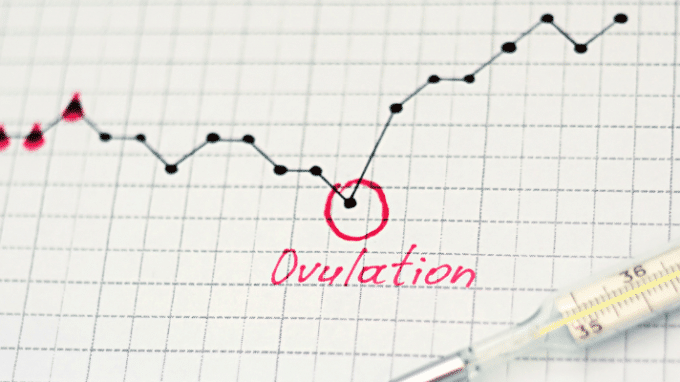If you’re looking to conceive or simply want to know more about your fertility, you should use fertility charting. It can help identify hormonal issues.
Tracking your menstrual cycle is wise whether or not you’re planning to get pregnant. It can teach you a lot about your cycle and your fertility health and give you better insight into your body, in general. You can start off small and go from there.
What Is Fertility Charting?
Fertility charting is tracking your menstrual cycle each month. You start by marking the days of your period up until your next period and everything in between. Even if you are not trying to get pregnant, it’s a good idea to chart your cycle because you can learn more about your body and even identify hormonal issues. You may wonder why you experience symptoms like acne, mood swings, migraines and fatigue at some points each month. Fertility charting can help you better understand why you have those symptoms.
For example, if you have a short luteal phase or have spotting toward the end of your menstrual cycle, it signifies a progesterone deficiency. Both of these issues can put you at greater risk of miscarriage if you get pregnant.
How Can Fertility Charting Help Identify Hormonal Issues?
Fertility tracking is a great idea for any woman. Maybe you’ve always wondered exactly how long your menstrual cycle lasts. Maybe your periods are irregular. Or maybe you want to begin trying to conceive and want to know the best days of the month to try. Fertility charting can provide you with the following:
- It can let you know when or if you’re ovulating
- It can show you the length of your luteal phase
- It can help you identify hormonal issues
- It can let you know if you may have thyroid issues
 Part of fertility charting involves taking your basal body temperature, or BBT, every day. This allows you to see when you ovulate. It’s a myth that all women’s menstrual cycles last 28 days and that they ovulate on day 14. In reality, a healthy menstrual cycle can last anywhere from 21 to 35 days. Likewise, ovulation can take place earlier or later than day 14 depending on each individual woman’s cycle.
Part of fertility charting involves taking your basal body temperature, or BBT, every day. This allows you to see when you ovulate. It’s a myth that all women’s menstrual cycles last 28 days and that they ovulate on day 14. In reality, a healthy menstrual cycle can last anywhere from 21 to 35 days. Likewise, ovulation can take place earlier or later than day 14 depending on each individual woman’s cycle.
Tracking your basal body temperature is done using a special thermometer designed specifically for taking your BBT. When you track via paper or an app, you can see when you ovulate by a temperature shift. In a normal chart, a woman’s temperature will fluctuate between 97 and 98 degrees. After ovulation, there is a notable increase in BBT that should continue through the rest of the cycle until her period is due.
BBT tracking is particularly good for a number of reasons, not just because you want to get pregnant. It’s helpful if you don’t want to get pregnant, you’ve stopped using hormonal birth control or you want to identify hormonal issues. If you do it for the latter reason, you can discuss those potential issues with your doctor and can get testing done to determine what’s going on.
Tracking Your Cervical Mucus
If you want to identify hormonal issues or want to conceive, another method to do that is to track your cervical mucus. This is another big aspect of fertility charting as it gives you an idea of whether you are fertile or not ovulating at all.
There are different types of cervical mucus depending on the time of the month. After your period, you are likely to find the mucus is dry. During ovulation, it’s wet and slippery with the consistency of egg whites. After ovulation, your mucus is often thick, white and creamy.
How Do You Know If You Have a Hormonal Imbalance?
It can be tricky to identify hormonal issues on your own. However, there are certain signs you can look out for that signify that you have a hormonal imbalance. They include the following:
- Irregular menstrual cycle
- Spotting or bleeding between periods
- Facial hair
- Extreme mood changes
- Sudden and unexplained weight gain
- New or worsening acne
- Male-pattern hair loss
- Male-pattern body hair
Even if you have one or more of these symptoms, you shouldn’t try to diagnose yourself. Your doctor can properly diagnose your condition and prescribe the right medication to treat you. Generally, the most common causes of such problems are polycystic ovary syndrome (PCOS) and thyroid dysfunction.
You may have a hormonal imbalance due to other factors. Menopause marks the end of a woman’s childbearing years. Perimenopause, the time that leads up to it, can bring certain changes, including hormonal imbalances. Certain lifestyle choices such as drugs, smoking, drinking and even your diet can lead to problems as well.
It’s important to speak to your doctor if you notice any problems when tracking your fertility. They can help you identify hormonal issues and give you essential advice and treatment.





